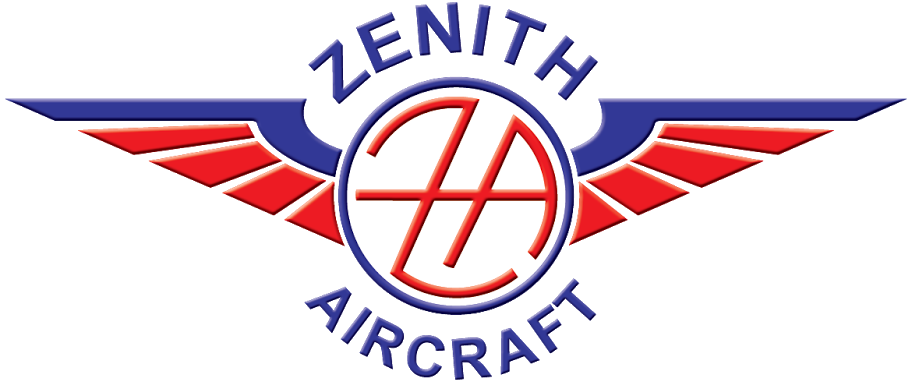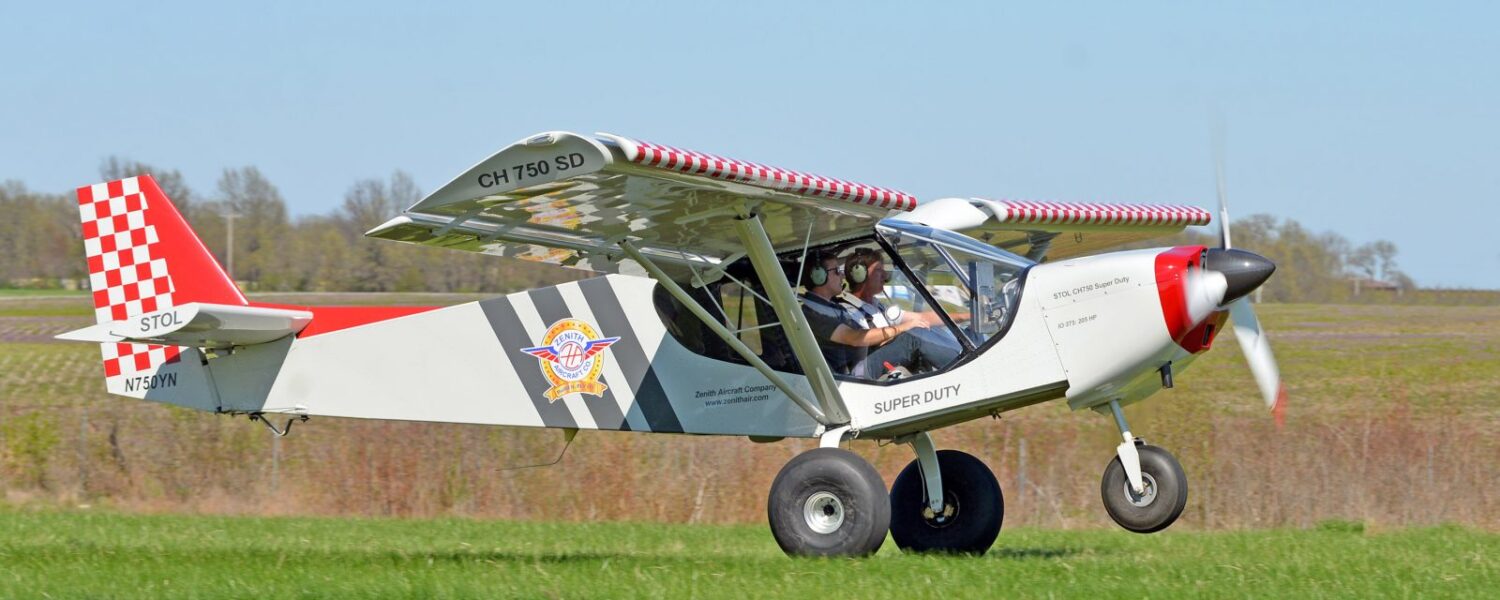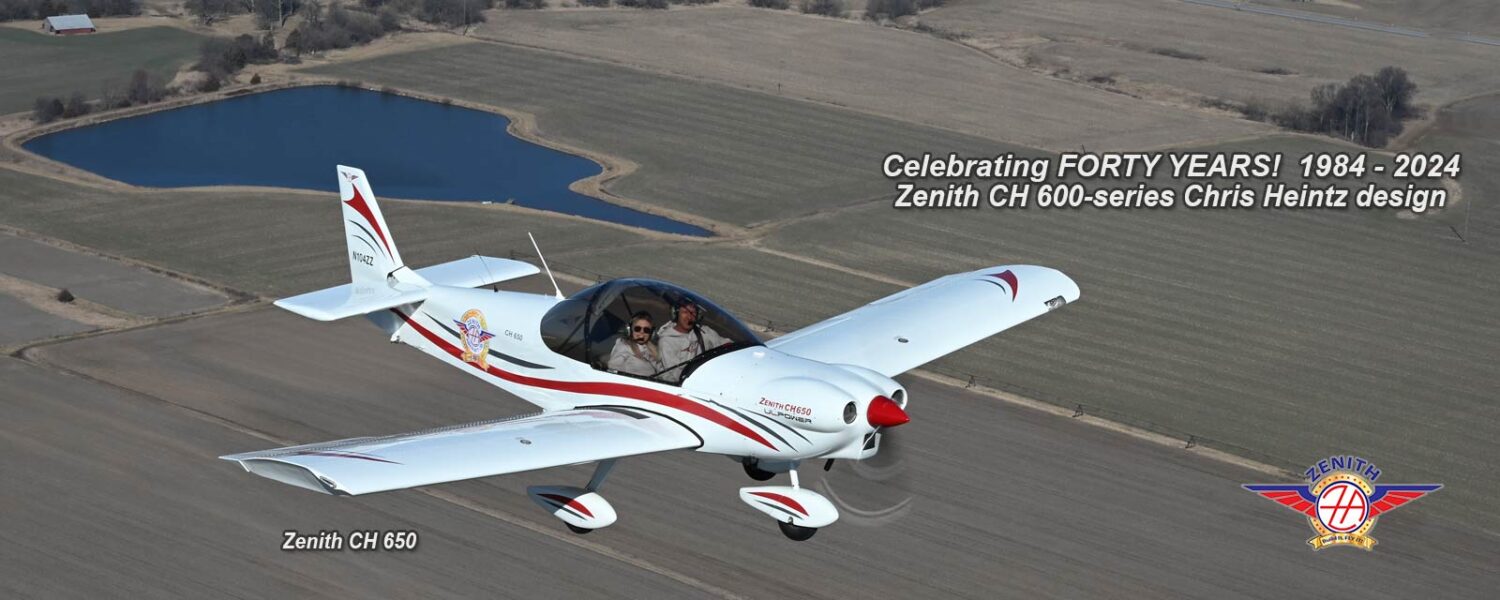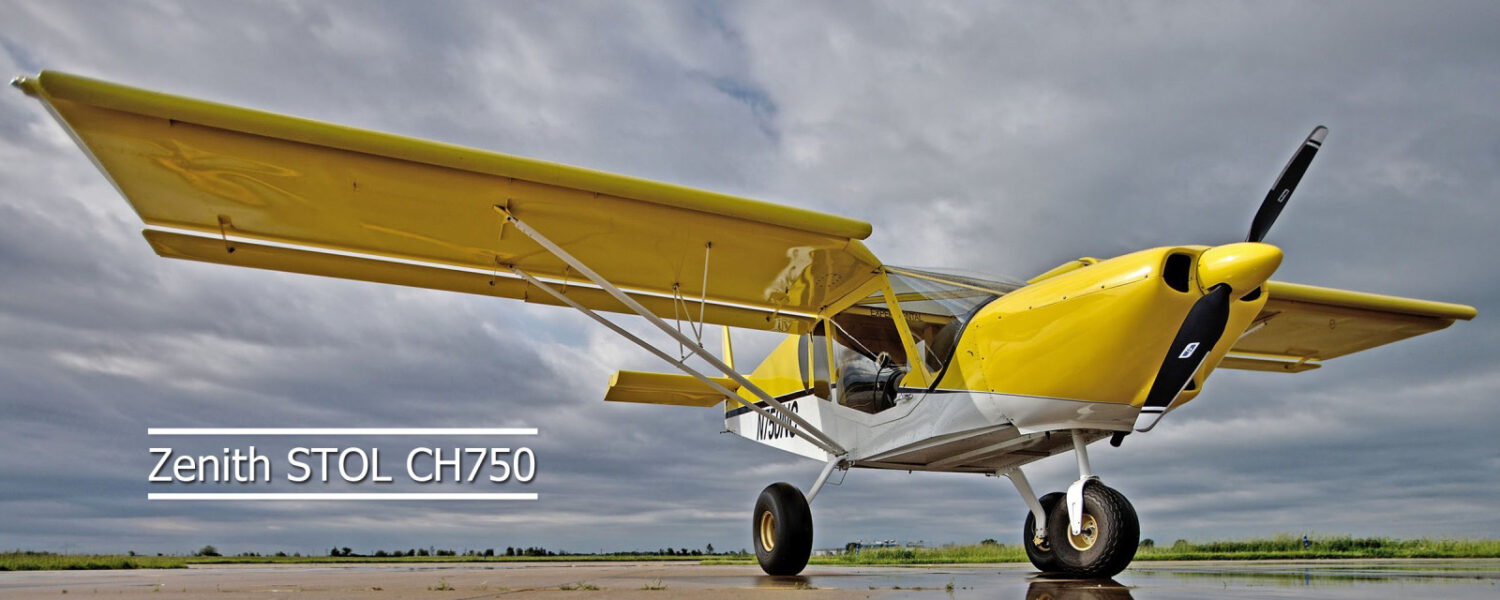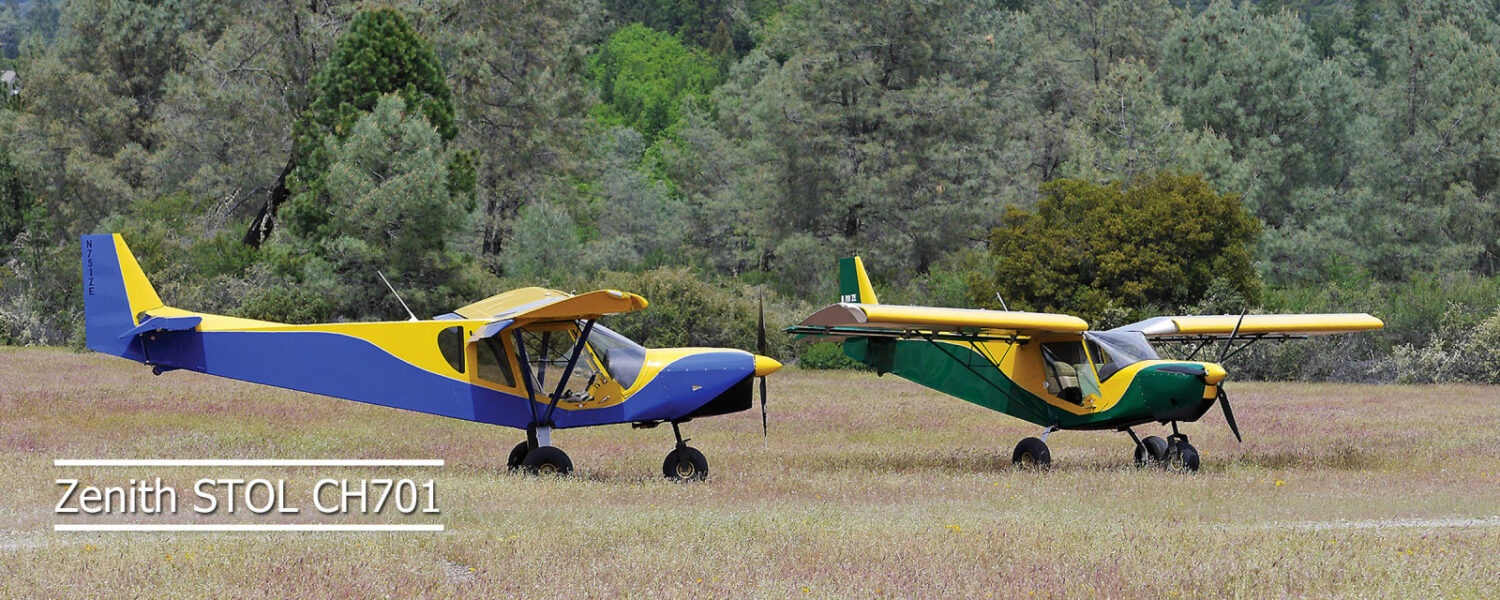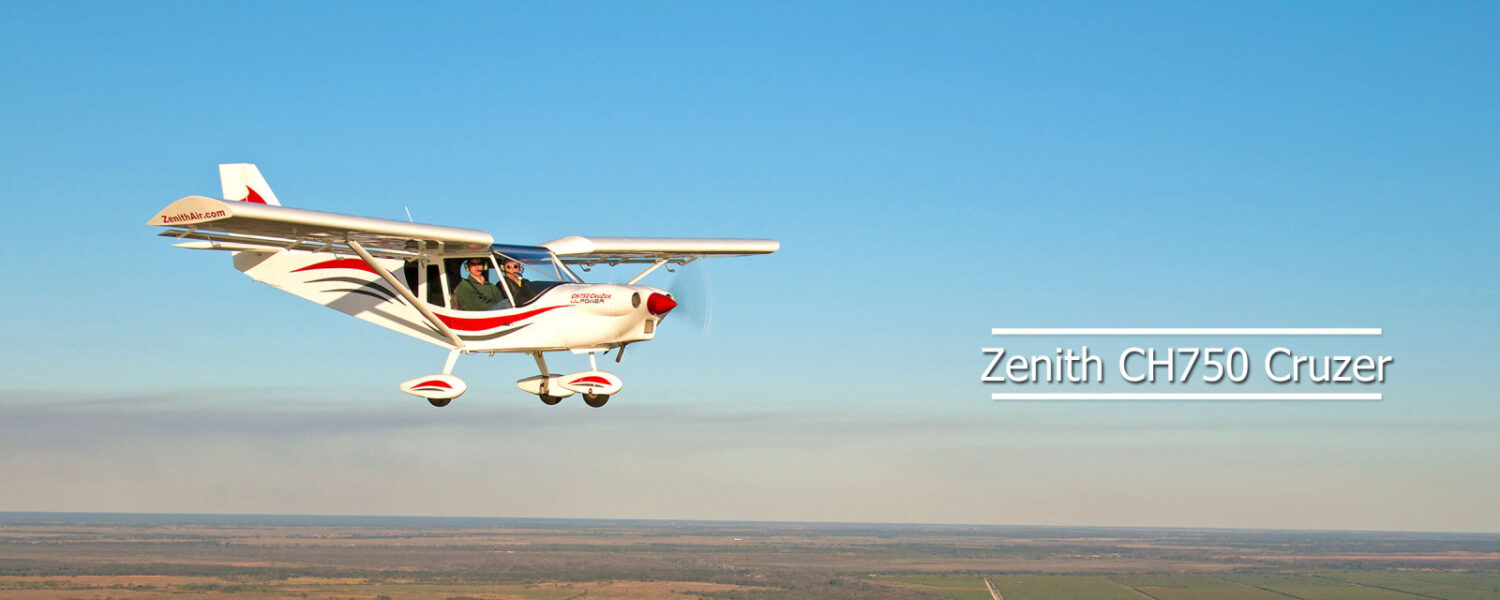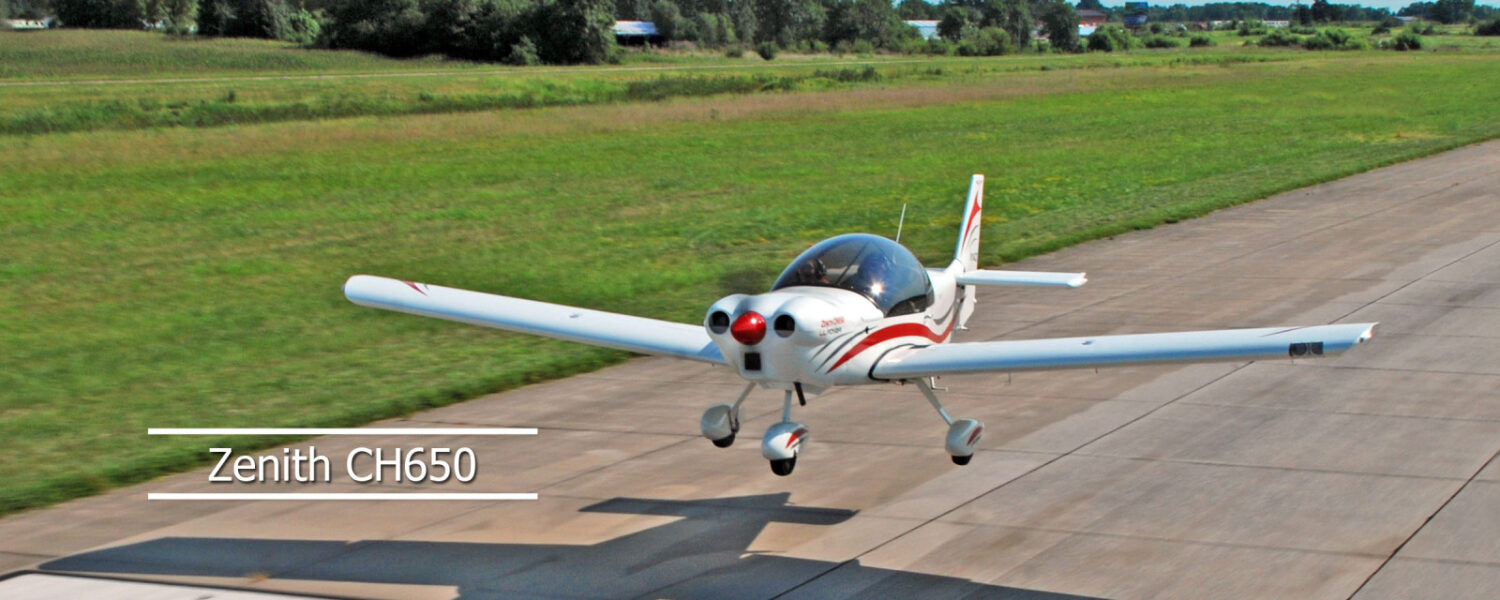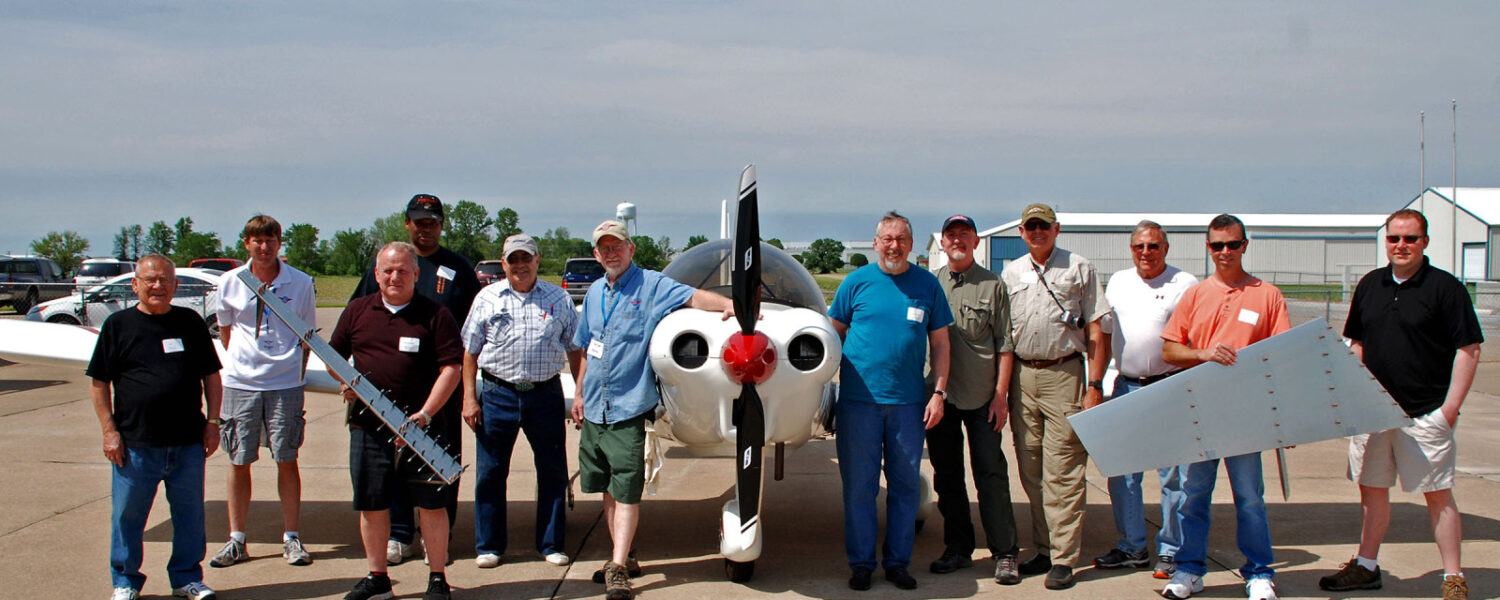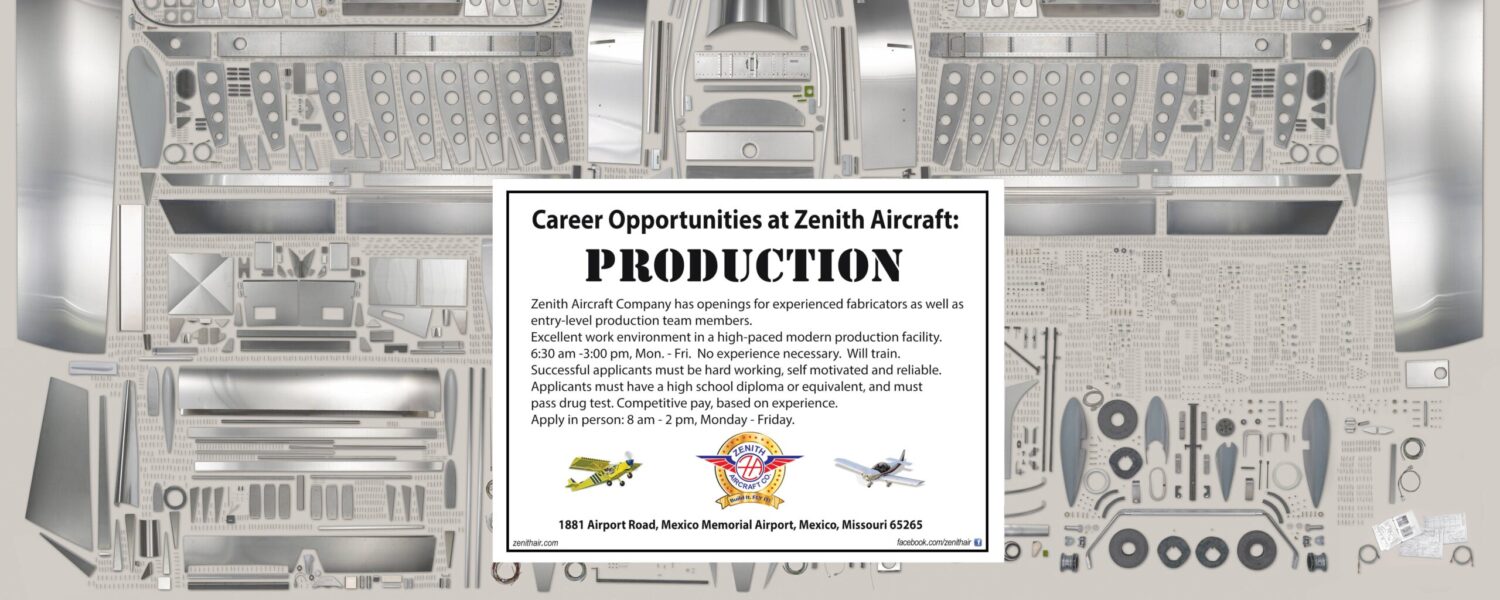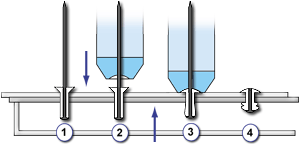Back to Zenith Technical Institute Home
All-Metal Construction Made Easy
Sheet metal aircraft construction is the most prevalent aircraft construction material by all measures, used extensively from jetliners to light, single engine airplanes and kits over the past five decades. Furthermore, virtually all other aircraft types use sheet-metal construction to some degree – whether an instrument panel on a composite aircraft, or a firewall on a wood or steel tube and fabric design.
Common sheet-metal construction is most accurately described as “aluminum-alloy, semi-monocoque, stressed skin construction.” This means that the metal used is some form of aluminum-based alloy, and that the airframe sections are designed and built so that the outer skin itself is part of the structure, with internal ribs, longerons, and bulkheads to distribute the loads. The metal parts are permanently joined with rivets or other fasteners.
Background:
Sheet-metal aircraft construction became a popular replacement to steel-tube (or wood) airframes covered by fabric because of its numerous advantages: Metal construction is more efficient because it does not need both a framework for structural strength (often accompanied by exterior braces) and a separate covering skin to provide the aerodynamic shape of the aircraft. Furthermore, sheet-metal is not as delicate as fabric, and not subject to ongoing damage by moisture and sunlight (UV rays). Aluminum-alloy construction is stronger yet lighter, while being very durable. By designing structural members to carry the required loads and to resist stress in relation to the physical characteristics of the metal parts and fasteners, a metal aircraft provides superior strength and durability while lowering weight (thus increasing performance).
New and modern metal alloys and materials have allowed aviation technology to advance, and is the reason it continues to dominate over other aircraft building methods. Aluminum’s unique combination of properties makes it one of the most versatile engineering and building materials in existence:
- Low weight / high strength relationship;
- Corrosion resistance, especially with newer alloys and modern primers;
- Low cost and widespread availability;
- Proven durability and resistance to sun and moisture
- Existence of vast amounts of empirical data on its properties
- Easy to work with: requires simple tools and processes, and does not require a temperature-controlled or dust-free environment, as with composites. Modern blind rivet fasteners have greatly simplified all-metal kit aircraft construction;
- Malleability: easy to form into many shapes, with almost no limit to the shapes it can be formed into;
- Environmentally friendly: no health hazards to worry about when working with sheet metal; recyclable;
- Easy to inspect: construction or materials flaws are easily detected, as are defective parts and damage.
- Simple to repair: rivets and fasteners can be easily removed to replace damaged parts or sections, and individual parts can be replaced without having to replace or rework an entire airframe section.
Additionally, a well-designed sheet-metal aircraft provides superior crashworthiness over other types, as an impact’s energy is absorbed by progressively collapsing the metal structure, as opposed to splintering or shattering upon impact. Another important advantage often overlooked is the inherent lightning protection that a metal airframe offers.
2024-T4 and 6061-T6 are two of the most common alloys used in kit aircraft today, and are readily available in many forms at affordable prices. The more modern 6061-T6 alloy is a very versatile alloy for aircraft construction, providing superior corrosion resistance, good formability (easy to work with), and flexibility and strength.
| Alloy | 6061-T6 | 2024-T4 |
| Copper | 0.25 4.50 | |
| Silicon | 0.60 | |
| Manganese | 0.60 | |
| Magnesium | 1.00 | 1.50 |
| Chromium | 0.25 |
Above indicates percentage of alloying elements in addition to pure aluminum.
Temper (-T) Designations
-T6: Solution heat treated and artificially aged
-T4: Solution heat treated
Sheet-Metal Construction Made Easy
As with most things, there are simple ways and then there are complicated and difficult ways of accomplishing the same goal. This is especially evident in aircraft design and construction: Making an aircraft easy to build starts at the design stage: A designer must not only be an expert in aerodynamics and stress analysis, but he (or she) must also maintain the builder’s perspective when designing an aircraft. Unfortunately, this is not the case with many engineers today: Often a design may be aerodynamically and structurally sound, but it will be so complex to put together that it requires a skilled and tooled factory environment to put together, making the aircraft unduly expensive to buy, time consuming to build, and costly to maintain. Other times the opposite may be true, where an aircraft may be quick and easy to build, but at the expense of aerodynamic efficiency and/or structural integrity.
It’s easy for an engineer to design a complicated aircraft, and more challenging to design a simple one. For a kit aircraft to be successful, it must be relatively simple in terms of construction, assembly and systems: Not only is a simple design easier and more affordable to build, but chances are that it will be well-constructed by the amateur builder, as there will be less opportunity for errors or poor workmanship. With a simple design, building time will be lower and less tools and skills will be needed to put the aircraft together, equating to much higher completion rates than complex projects.
Case Study: Chris Heintz designs
Chris Heintz, chief engineer and president of Zenair Ltd., started his engineering career on complex factory-produced aircraft (Aerospatiale, Avions Robin (France) and de Havilland) where he became a seasoned aerodynamics and stress engineer. However, he also discovered that most of what he designed was complex and costly to produce. Thus, on his own, he designed an aircraft for his own personal use, and learned that there was an easier and better way to work with sheet-metal, taking away the complexities while retaining the many advantages inherent in all-metal construction. Being an engineer and not a craftsman or mechanic, he incorporated this simplicity in his design that he quickly completed. The success of this first design, and its appeal to amateur builders, made Heintz decide to strike out on his own in 1974 to manufacture aircraft kits and designs, making him a pioneer in the kit aircraft industry, which was nearly non-existent at the time. Over the past 30 years, Zenair has become a major player in the kit industry, bringing to market over 12 successful all-metal designs. Over the past two decades, Heintz has not lost focus of what made his designs successful in the first place: design and construction simplicity. Actually, over this period, the kits have become even easier and quicker to build as new designs, building techniques and technology have continued to simplify the building process. In 1994, Heintz successfully obtained FAA type-certification on a new low-cost trainer aircraft design, the ZENITH CH 2000, which uses the same construction techniques developed by Heintz in its line of kit designs.
While volumes have been written just on the “fundamentals” of sheet-metal construction, building a simple all-metal aircraft does not require an airframe mechanic’s formal training, skills or tools. While it’s true that metal construction can require a full inventory of tools and skills, it’s equally true that simplified and modern forms of sheet metal construction are easier and quicker than many other forms of aircraft construction, while retaining metal construction’s inherent advantages.
An examination of how Zenith’s popular ZODIAC CH 601 series and STOL CH 701 all-metal kit aircraft are built and assembled demonstrates the simplicity available in all-metal construction: From conception, the designs are developed for amateur builders and pilots. This is accomplished by using readily available materials and simple systems, and by designing an aircraft that will produce the desired flight performance and characteristics while also being easy to build.
The extensive use of blind rivets (instead of conventional “bucked” rivets) has contributed largely to simplifying all-metal construction. These modern blind fasteners are as simple to set as standard “pop” rivets, and don’t require the expertise and tools required for hammering and bucking conventional solid rivets, such as pneumatic riveter, air compressor and an assortment of bucking bars. Aside from not having to purchase this expensive equipment and needing to become an expert at riveting, blind rivets represent a number of significant advantages to amateur builders:
First, the rivets are pulled only from one side (hence the name “blind” rivet), unlike bucked rivets that need to be driven from one side and bucked on the other side. This means that blind riveting can be done by one person, and the builder does not need to exercise physical contortions to gain access behind the rivet when riveting sections together. Pulling blind rivets is nearly silent compared to the pounding noise of a pneumatic hammer, lending itself well for home projects (without driving the family and neighbors away). Also, thanks to the innate simplicity of pulling a blind rivet, the process is quick and foolproof. On simple all-metal aircraft, exterior skins are not counter-sunk for flush riveting. While perfectly smooth skins may be aesthetically desirable, they have negligible impact on performance, especially when factoring in the hundreds of building hours it takes to achieve such a finish. Another advantage of blind rivets is their long grip area length, which means that the same rivet size may be used to fasten a wide range of material thicknesses, avoiding the need for a large inventory of different length rivets. While per unit cost is higher for blind rivets, they provide many advantages to homebuilders, and have become very popular with many modern all-metal kit aircraft, providing the required strength, durability, and building ease.
“There is nothing that looks faster than pop-riveted aluminum. From race cars to airplanes, the blind rivet is the fastener of choice for joining sheet metal.”
Make magazine, volume 05, February 2006, page 111 “Holes, Rivets, and Bent Metal”
Simplicity of Parts: While aluminum alloys may be formed into nearly any shape imaginable, this usually requires specialized skills and costly tooling. Cost is greatly reduced by using off-the-shelf stock aviation-grade materials (flat sheet metal and rolled extrusions), and simple shapes and bends simplify manufacturing and assembly. For these reasons, the surface skins on the aircraft are designed with single-curvature bends, as opposed to compound curves. Wherever possible, the internal structure is also made of straight, single-curvature parts, such as longerons, wing spars, and stiffeners. Internal ribs and bulkheads must be formed, and are stamped and hand formed using simple forming dies. Constant chord wing sections minimize the number of different formed parts and simplify assembly. The use of stock materials and simple parts make Heintz designs suitable for “scratch-built” projects, where the complete aircraft can be plans-built from the drawing (blue prints) and assembly instructions alone, saving the builder the cost of a factory-produced kit (though this requires some extra tools and time).
Heintz’ designs are easily recognized by their thick wing sections, common on many older designs like the DC-3. A thick, cantilever wing provides maximum strength at minimum weight, while also being aerodynamically efficient since there is no drag-inducing exterior bracing. The wing’s main structural member is a thick single spar, made up of a sheet-metal web riveted to top and bottom extruded longerons. Thanks to the high strength of this spar, a relatively low number of wing ribs and stiffeners is needed, thus simplifying construction. The efficient use of parts in a design limits the number of parts required to reduce building time and cost.
In Zenith Aircraft’s kits, all the parts and materials needed to complete the airframe are supplied in the standard kit. The philosophy behind the kit is to supply all the parts and components in such a state that a builder needs only basic skills and tools to put the aircraft together. That means that parts are supplied pre-formed and ready for assembly, and that specialized components, such as welded steel parts, wing spar assemblies, ribs and bulkheads are provided in a completed, ready-to-install state. Recent improvements to the kits, such as pre-drilled flat skins, further simplify assembly while minimizing required skills.
Easy to Build: For the amateur builder, sheet-metal construction offers distinct advantages: The modular construction of an all-metal aircraft lends itself well to the homebuilder. Unlike a welded steel frame or composite shell that takes up a lot of space right from the beginning, a metal aircraft is made up of smaller sections that are only joined together later, minimizing workshop space requirements. Using single-curvature or flat sections reduces the need for any jigs or assembly fixtures, allowing the builder to easily build-up sections on a flat workbench (saving the time and expense of making jigs). With a Zenith kit, a builder measures, lines-up, drills and rivets the various components individually on the workbench, and only later are the assemblies joined together. “Clecoes” are temporary fasteners (hole clamps) that firmly hold the drilled sections together before rivets permanently fasten them. With Clecoes, whole sections of an aircraft can be temporarily assembled and joined, and then easily disassembled before final assembly and finishing.
When putting together an all-metal aircraft, any assembly mistakes can often be fixed without having to replace a costly part. Building errors can be easily fixed simply be re-aligning and drilling the part correctly. Importantly, errors in sheet-metal construction are easily identified, unlike a poor weld or lamination that may go by undetected. The “open” construction of a sheet-metal aircraft makes it easy to put together and is readily accessible to install controls and other components. Installing an antenna or landing light on a metal aircraft is very straightforward – even after a section has been completed (whereas the same task on a composite structure may prove very time consuming, if not impossible, after a section has been closed).
To prove how quick and easy Zenith kits are to build, company staff has led volunteers in building and flying various Heintz designs within just seven days. In 1993, a ZODIAC kit was assembled and flown during the one-week EAA Sun’n Fun fly-in in Lakeland, Florida. Most builders of Zenith kits are novices with no prior aircraft building experience. To help them learn more about the construction and kit assembly, the company holds workshops at the factory to let potential builders gain hands-on building experience before making the commitment of starting a kit project.
The Completed All-Metal Aircraft
Aircraft ownership is a long term investment. The completed all-metal aircraft provides proven durability, and lower maintenance costs than fabric-covered or composite aircraft. Once an all-metal aircraft is completed and flying, the inherent advantages of aluminum alloys continue to be apparent:
Suitable for Outdoor Storage. The durability of a metal airframe makes it suitable for continuous outdoor storage, saving the owner ongoing costly hangar fees or the hassles of folding/removing the wings and trailering the aircraft home.
Easy to Inspect. Both external and internal structures can easily be inspected once a metal airframe has been completed. This becomes an important safety factor as potential problems may be identified before they manifest themselves. Since the workmanship and condition can be thoroughly inspected even on an older aircraft, the resale value of an all-metal aircraft is often optimized.
Easy Maintenance. The durability of an all-metal aircraft lowers ongoing maintenance requirements, and since most builders perform their own maintenance, this is accomplished with minimum down-time, cost, and complexity for the non-mechanic.
Despite the apparent successes of other construction types in kit aircraft, aluminum alloy’s unique combination of versatile building and engineering properties is the reason all-metal construction continues to dominate as a prime building method of choice in all aircraft for many years to come.
